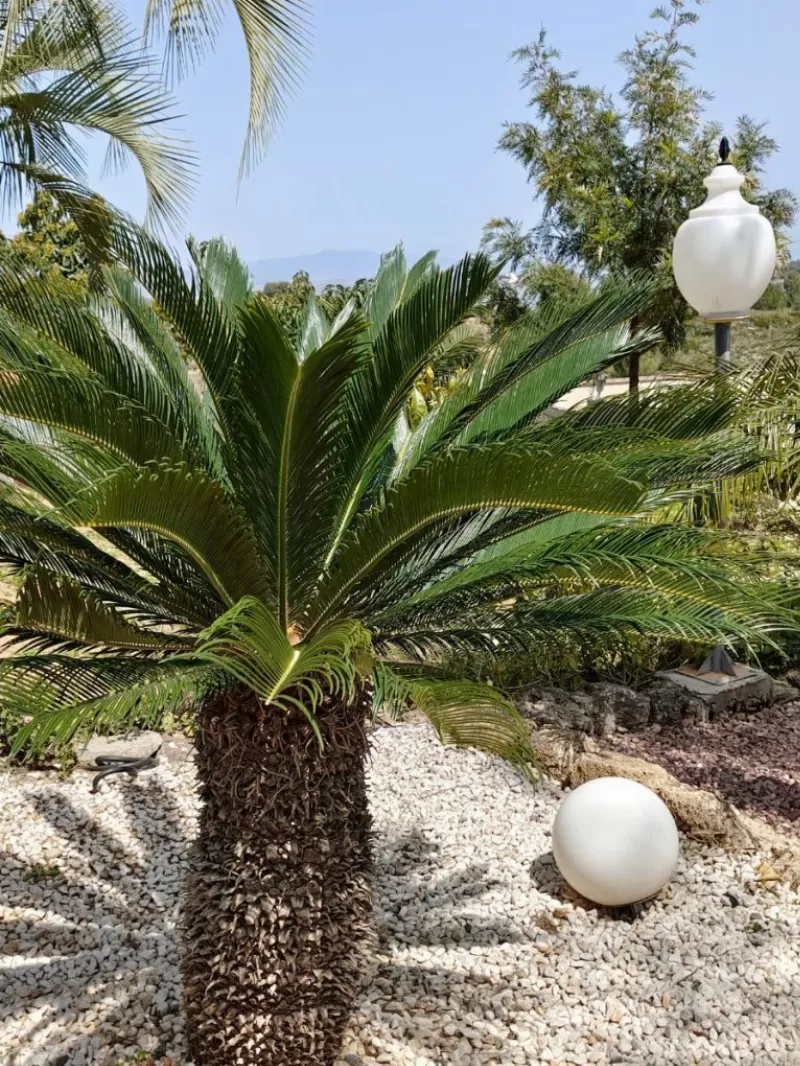- Palm tree stumps can be removed using four main methods: digging, grinding, chemical rotting, and burning
- DIY methods like digging and grinding are safer and more eco-friendly for homeowners
- Professional help is recommended for chemical and burning methods due to safety concerns
- Proper preparation and safety precautions are essential for all stump removal techniques
- Stump removal costs average $320 for professional services, but DIY options can be more cost-effective
Palm trees can be a beautiful addition to any landscape, but when it’s time to say goodbye, removing the stump can be quite a challenge. Whether you’re dealing with an eyesore, a tripping hazard, or potential pest problems, getting rid of that stubborn palm tree stump is often necessary. In this guide, we’ll explore four effective methods to remove a palm tree stump, along with essential tips to ensure your safety and success.
- Ground Cover Kinnikinnick Plant: A Versatile and Charming Addition to Your Landscape
- 14 Plants to Avoid Growing Near Your Beloved Hydrangeas
- Watermelon Red Crape Myrtle: A Timeless Beauty for Your Garden
- 15 Best Landscaping Ideas Around Tree Roots: Transform Your Garden
- Crimson King Maple Growth Rate: A Majestic Marvel in Your Garden
 It is time to say goodbye to the last remainders of your palm tree
It is time to say goodbye to the last remainders of your palm tree
You're reading: How to Remove A Palm Tree Stump: 4 Effective Methods
Why Remove a Palm Tree Stump?
Before we dive into the removal methods, let’s consider why you might want to get rid of that palm tree stump in the first place:
- Safety concerns: Stumps can be tripping hazards, especially for children or in areas with high foot traffic.
- Pest prevention: Decaying stumps can attract termites and other wood-boring insects.
- Aesthetic improvements: An old stump can be an eyesore in an otherwise well-maintained garden.
- Space utilization: Removing the stump frees up valuable garden space for new plantings or landscaping features.
 One incentive to removing a palm tree stump is to prevent pest infestations
One incentive to removing a palm tree stump is to prevent pest infestations
Preparation: Setting the Stage for Success
Before tackling any stump removal method, proper preparation is key:
- Gather necessary tools and safety equipment (gloves, goggles, sturdy shoes)
- Clear the area around the stump
- Check for underground utilities by calling 811
- Obtain any required permits from local authorities
With preparations complete, let’s explore the four main methods for removing a palm tree stump.
Method 1: Digging Out the Stump
This method is best for smaller stumps and those comfortable with physical labor.
Steps:
- Dig around the stump to expose surface roots
- Cut through exposed roots using a saw or axe
- Continue digging deeper to reveal more roots
- Use a shovel or crowbar to pry the stump loose
 Get the stump out of the soil with a shovel or crowbar
Get the stump out of the soil with a shovel or crowbar
Read more : Trees with Red Heart-Shaped Leaves: Nature’s Love Letters
Pro Tip: Wetting the soil around the stump can make digging easier, especially in clay-heavy soils.
Method 2: Grinding the Stump
Stump grinding is efficient and effective, especially for larger stumps or multiple removals.
Steps:
- Rent a stump grinder (costs average $190-$270 per day)
- Clear the area of rocks and debris
- Use a chainsaw to cut the stump as close to the ground as possible
- Position the grinder over the stump and grind it down in sections
- Remove wood chips and fill the hole with soil
 Grinding the stump with a tree grinder works it into little pieces
Grinding the stump with a tree grinder works it into little pieces
Safety First: Always wear protective gear when operating a stump grinder, including eye and ear protection.
Method 3: Chemical Rotting
This slower method uses chemicals to accelerate the natural decomposition process.
Steps:
- Drill holes into the stump
- Pour stump remover chemicals into the holes
- Keep the area covered and moist
- Wait 4-6 weeks for the stump to soften
- Break apart the softened stump with an axe
 Chemical rotting takes around two months to process
Chemical rotting takes around two months to process
Caution: Chemical stump removers can be harmful to other plants and animals. Use with extreme care and consider eco-friendly alternatives.
Method 4: Burning the Stump
This method should only be attempted if legal in your area and with extreme caution.
Steps:
- Check local laws and obtain necessary permits
- Create a fire barrier around the stump
- Drill holes in the stump and fill with kerosene
- Ignite the stump and monitor closely
- Extinguish thoroughly when finished
Read more : How to Transplant A Maple Tree: Expert Tips for Moving and Caring for Red Maples
 Burning the stump can take up to half a day, so plan accordingly
Burning the stump can take up to half a day, so plan accordingly
Warning: Burning stumps can be extremely dangerous and is not recommended for DIY removal. Consider professional help for this method.
DIY vs. Professional Removal: Making the Right Choice
While DIY methods can save money, sometimes calling in the pros is the wisest choice. Consider professional help if:
- You have multiple large stumps to remove
- The stump is in a difficult-to-access location
- You’re not comfortable with heavy machinery or chemicals
- Time is a critical factor in your project
Remember, safety should always be your top priority when tackling any garden project.
Conclusion: A Stump-Free Future Awaits
Removing a palm tree stump might seem daunting, but with the right approach, it’s a manageable task. Whether you choose to dig, grind, rot, or burn (cautiously!), you’re on your way to reclaiming your garden space.
By understanding these removal methods and weighing the pros and cons of each, you can make an informed decision that suits your specific situation. Remember to prioritize safety, follow local regulations, and don’t hesitate to call in professionals for complex jobs.
We’d love to hear about your palm tree stump removal experiences! Share your stories, tips, or questions in the comments below. Happy gardening, and here’s to a stump-free landscape!
Source: https://thelittle.garden
Category: Lanscaping
